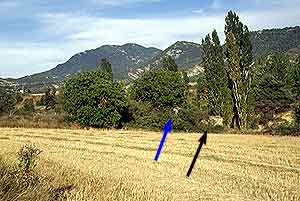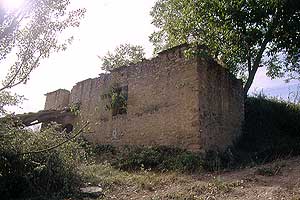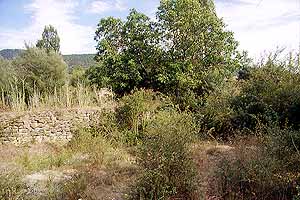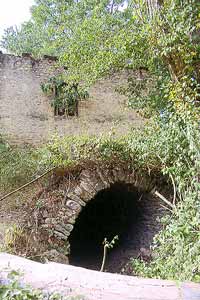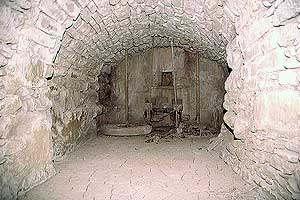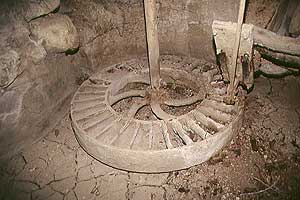Path: Introduction -
Visit the mills; catalogue - Molino de Buetas

Mills in Altoaragón - harinero
Buetas

Buetas is situated in
the region. From L'Ainsa take the main road for Campo. About 13 kms later
turn right for Tierrantona. Keep to the main road and you'll soon cross the . Just over the bridge the road turns right towards Graus. Do not take this turn.
Instead go straight ahead where, among other villages, is signposted. You'll
soon reach your destination. Park the car at the entrance of Buetas where a dirt road goes off
to the left. That's the way to walk. After less than a km you'll find the watermill.
The mill gets its water from the Barranco de Solipueyo.
Pictures: 13.viii.2006
